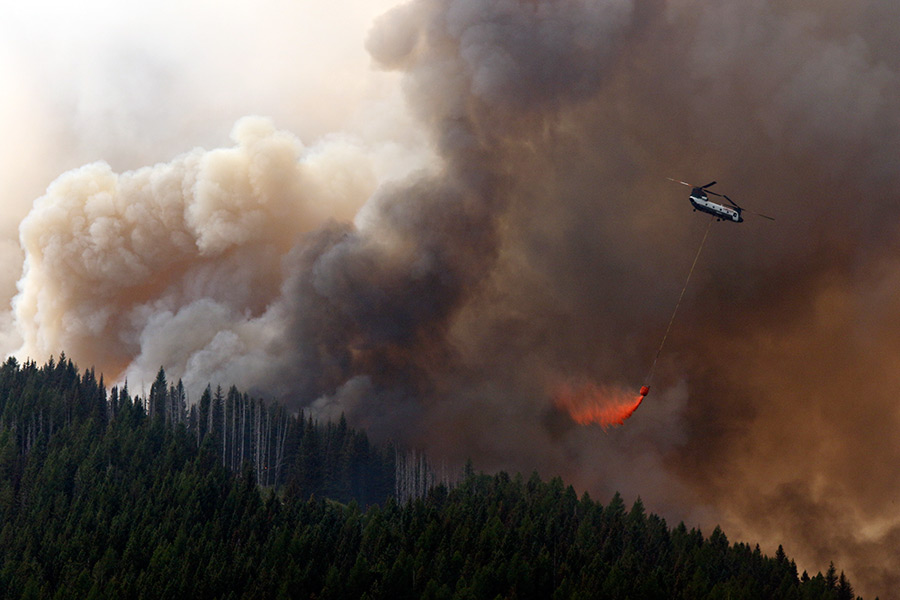ESSEX – As smoke billowed overhead, Steve Burglund and friends grabbed as much as they could from his cabin and piled it into two pickup trucks and a trailer.
Everything had to go – lamps, tables, family photos, his dad’s old speed skates and skis. Lots of skis.
“I don’t know if the fire will get here, but the chances are good,” Burglund said. “We’ve always worried about this day.”
It’s a scene that has played out several times across the American West this summer as more than 7 million acres has gone up in smoke in a wildfire season the head of the U.S. Forest Service recently called “the new normal.”
In Northwest Montana, nearly a dozen large fires have scorched tens of thousands of acres in the worst wildfire season in a decade. On the southern edge of Glacier National Park, the community of Essex is on edge as the Sheep Fire burns just a mile away, threatening more than 200 structures and two critical transportation corridors, U.S. Highway 2 and BNSF Railway’s main line between Chicago and Seattle. On the Flathead National Forest’s Spotted Bear Ranger District, the Bear Creek Fire blew up last week engulfing nearly 20,000 acres east of Swan Lake making it the largest active fire in Montana. And further west, in the Bull River Valley, nearly 40 homes have been evacuated as the Napoleon Fire chews through thousands of acres between Noxon and Troy.
Smoke has rolled in from Washington, where even more land has been scorched in that state’s largest fire season ever. One fire, the Okanogan Complex, has burned 400 square miles in the central part of the state. That same fire claimed the lives of three firefighters last week.
The fire season that has engulfed the Northwest comes amid a historically dry summer, one that is so dry that one fire analyst said it could take more than one season-ending rain or snow storm to finally put a damper on the fires. At an organizational meeting on Aug. 23, the incident management team at the helm of the Thompson-Divide Complex said they are making plans to stay on site well into September.
“We’re in it for the long haul,” said fire behavior analyst David Greathouse.
While in years past the fire season has traditionally come to a close by September, climate change is rapidly pushing that end date further into the fall. According to a new study from the U.S. Forest Service, fire seasons are now on average 78 days longer than they were in the 1970s.
Mike Richmond, a meteorologist with the Northern Rockies Coordination Center, said that this year’s season could last into the first week of October.
“A dry winter coupled with the fact that we did not get a lot of rain in May and June pushed us into the extreme,” he said.
Richmond said the region could see similar fire conditions next year as an El Nino weather pattern sets itself up in the Pacific Ocean. Even though the El Nino could result in more precipitation, if it comes as rain instead of snow, vegetation could quickly dry out next spring.
But what happens next year is of little concern to people worried about what will happen next this season.
Last week, as the Sheep Fire continued to rage just a few ridges away, residents of Essex packed what they could and hoped for the best. At the end of a dirt road, Ted and Lisa Steiner were clearing brush from around their cabin and covering the porch with fire-resistant foil.
“We’re doing what we can and seeing what happens,” Lisa said. “You’ve got to respect Mother Nature.”
Next door, Burglund cleared out his family’s cabin that has stood near the railroad tracks for 95 years. The cabin was built a decade after the last major wildfire roared through Essex, the legendary Big Burn of 1910.
“It’s nothing special,” Burglund said, looking at the cabin as he loaded up another arm full of photos and memories, “but it’s ours. It’s our happy place.”
